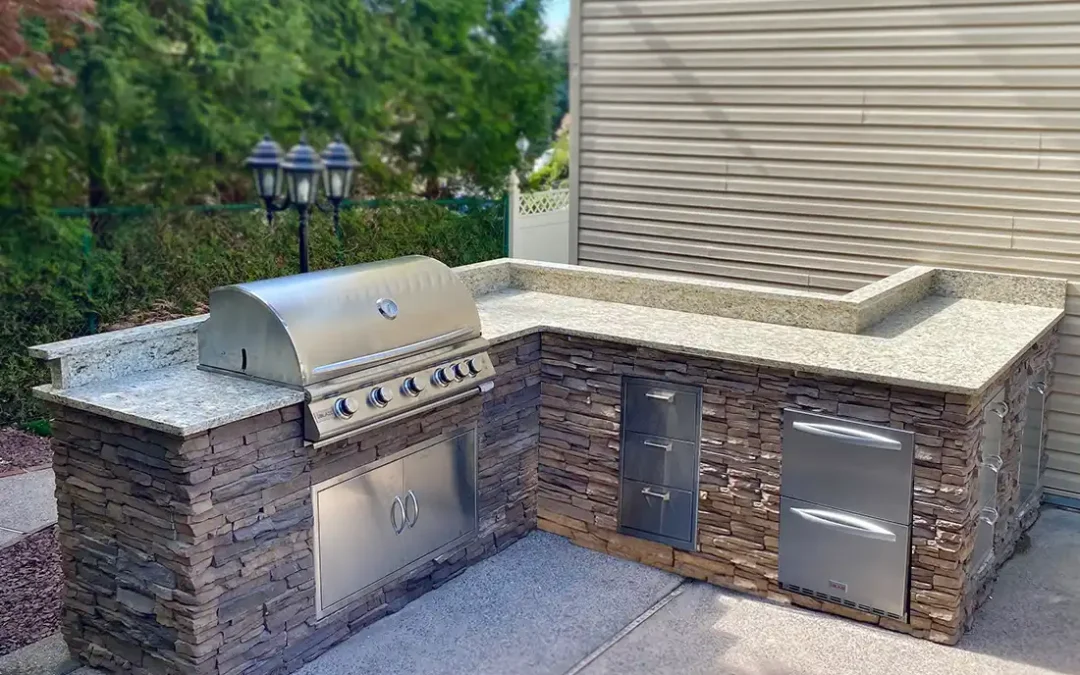When it comes to heating your home with gas logs, you have a variety of options to choose from. Each type of gas log system, whether it’s vented, vent-free, or direct vent, has its own set of characteristics, advantages, and drawbacks. In this blog, we’ll break down each type in detail, helping you make an informed decision about which is best suited for your home and lifestyle.
What Are Vented Gas Logs?
Vented gas logs are designed to mimic the look and feel of a traditional wood-burning fireplace. These systems require a functioning chimney or flue to vent the combustion gases outside.
How Do Vented Gas Logs Work?
Vented gas logs burn gas in a way that produces visible flames and substantial heat. However, because they are designed to release combustion gases outside, they are not very efficient in terms of heat output. The heat that is generated mostly escapes through the chimney.
Pros of Vented Gas Logs
- Authentic Appearance: The flames and ambiance closely resemble a real wood fire.
- No Cleaning: Unlike wood-burning fireplaces, vented gas logs do not produce ash or soot, eliminating the need for regular cleaning.
- Ease of Use: They offer the convenience of gas with the charm of a traditional fireplace.
Cons of Vented Gas Logs
- Heat Efficiency: These logs are not very efficient in terms of heat output, as a significant amount of heat is lost up the chimney.
- Energy Loss: Since they require a vent, the heat produced is often not retained in the room.
Vented gas logs are best for those who prioritize aesthetics and ambiance over heat efficiency and are looking to upgrade from a traditional wood-burning fireplace.
What Are Vent-Free Gas Logs?
Vent-free gas logs, also known as ventless or unvented gas logs, are designed to operate without a chimney or vent. They burn gas in a way that produces minimal combustion by-products, which are absorbed by the room.
How Do Vent-Free Gas Logs Work?
Vent-free gas logs are engineered to burn gas cleanly, with combustion by-products absorbed by the room’s air. These logs have an oxygen depletion sensor (ODS) to ensure safe operation by shutting off the unit if oxygen levels drop too low.
Pros of Vent-Free Gas Logs
- Heat Efficiency: They provide more heat to the room since none of it is lost through a vent. They are generally more efficient than vented logs.
- Installation Flexibility: Can be installed in any room or space as long as it meets the required air exchange and ventilation standards.
- Cost-Effective: Typically less expensive to install due to the absence of a venting system.
Cons of Vent-Free Gas Logs
- Indoor Air Quality: They can affect indoor air quality if not used properly, especially in poorly ventilated rooms.
- Regulations: Some areas have restrictions or regulations on vent-free gas logs due to concerns over indoor air quality and safety.
Vent-free gas logs are best for homeowners looking for an efficient heating solution and those who want the flexibility of installation without the need for a chimney or vent.
What Are Direct Vent Gas Fireplace Inserts?
Direct vent gas inserts are a type of gas fireplace designed to be installed into an existing fireplace or as a standalone unit. They use a sealed combustion system to draw air from outside and expel combustion gases outside.
How Do Direct Vent Gas Fireplace Inserts Work?
Direct vent gas inserts have a double-walled venting system that pulls air from outside the home for combustion and expels exhaust gases outside. This makes them highly efficient and ideal for use in any room.
Pros of Direct Vent Gas Fireplace Inserts
- Heat Efficiency: Direct vent inserts are highly efficient, with minimal heat loss. They provide consistent and effective heating.
- Indoor Air Quality: They do not affect indoor air quality since all combustion gases are vented outside and they do not use indoor air for combustion.
- Versatility: Can be installed in existing fireplaces or as a new installation in various locations.
Cons of Direct Vent Gas Fireplace Inserts
- Installation Costs: Typically more expensive to install than vented or vent-free systems due to the need for specialized venting.
- Design Limitations: The look may be less traditional compared to vented logs, though many modern designs are quite appealing.
Direct vent gas fireplace inserts are best for homeowners who want efficient heating and excellent air quality, and who are willing to invest in a more complex installation process.
Work With Halligans for Your New Gas Fireplace Installation
Choosing the right gas log system depends largely on your priorities—whether it’s the visual appeal, heat efficiency, or ease of installation.
- Vented Gas Logs are ideal for those who want the traditional fireplace look and are less concerned with heat efficiency.
- Vent-Free Gas Logs are suitable for those who want to maximize heat output and installation flexibility, but who must be cautious about indoor air quality.
- Direct Vent Gas Inserts are perfect for those seeking the highest efficiency and the best air quality, and who don’t mind the additional installation costs.
Evaluate your needs, consider the characteristics of each type, and choose the gas log system that best fits your home and lifestyle. Happy heating!



